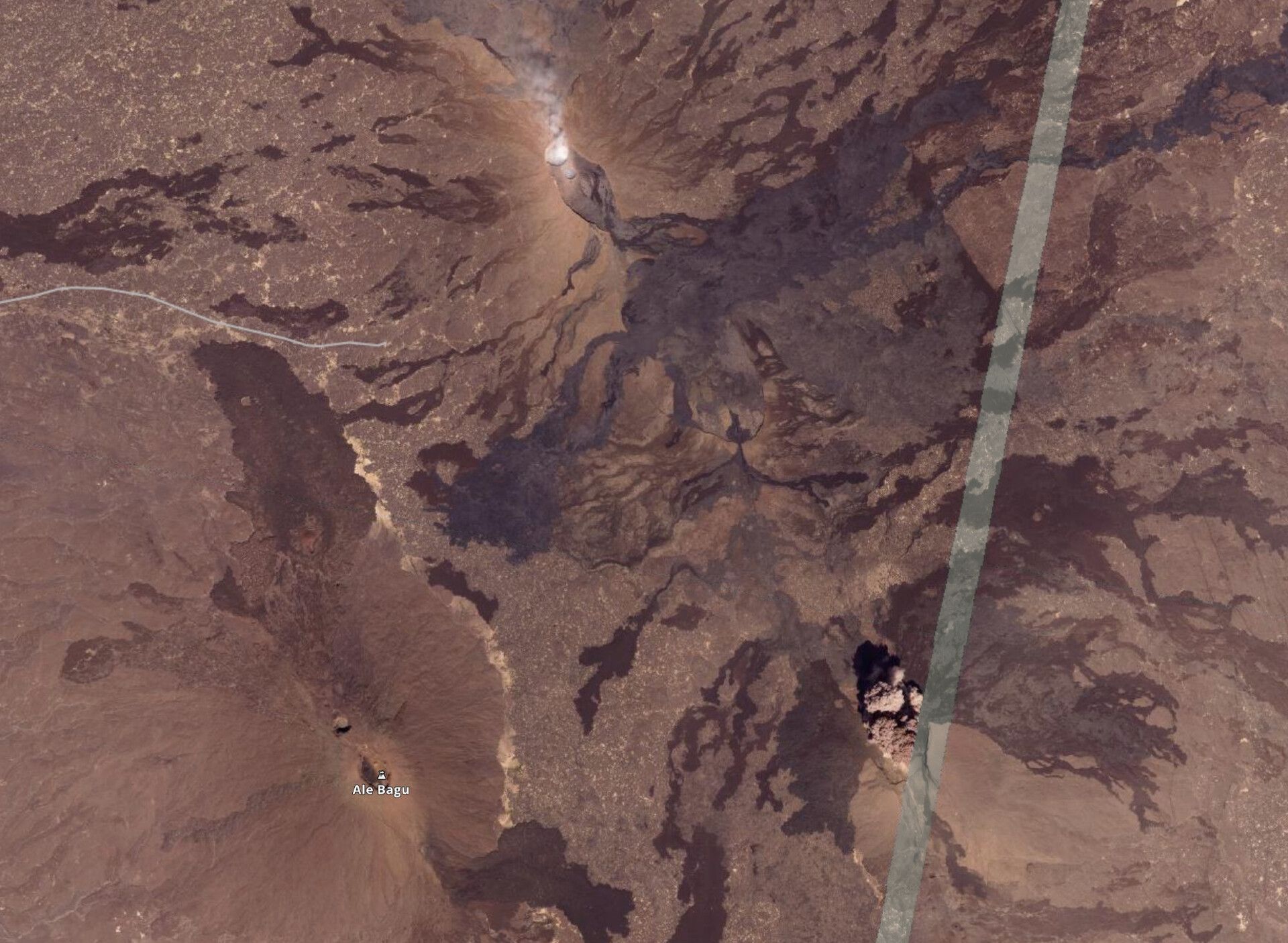- Eruptions: Where It's Always Volcano Day
- Posts
- Eruptions Newsletter Extra for November 23, 2025
Eruptions Newsletter Extra for November 23, 2025
Unexpected eruption from Hayli Gubbi in Ethiopia.
Activity News

Early stage of the Hayli Gubbi eruption in Ethiopia. Credit: Planet (via Simon Carn)
Although we have many of the world’s potentially active volcanoes monitored to some degree, not all of them are watched. Some haven’t been restless for millennia, some are far from population centres, some are in areas challenging to equip with seismometers and other instruments. This means that eruptions can occasionally seem like they “come out of nowhere”.
Today, a significant explosive eruption occurred at Hayli Gubbi in Ethiopia. This volcano, located south of the well-known Erta Ale, has no known historic eruptions. In fact, if you look at the Global Volcanism Program’s page for the volcano, there is very little known at all beyond the fact that some lava flows overlap 8,200 year old sediments.
However, it is noted to erupt basalt and trachydacite/rhyolite. This bimodal mix of lavas means it can produce lava flows (basalt) and potentially explosive eruptions (trachydacite and rhyolite). This kind of activity is common in the East African Rift.
Satellite images captured an impressive ash plume spreading over the Afar Rift, Red Sea and southwestern Arabian Peninsula on November 23, 2025. The Toulouse VAAC estimated the ash reaching as high as 15 kilometres (~49,000 feet), which is impressive to say the least.

Very early moments of the Hayli Gubbi eruption on November 23,2025. The steaming lava lake at Erta Ale can be seen in the top of the image. Credit Planet (via Simon Carn).
The generally clear skies in the region mean that many satellite captured different stages of the eruption. One of Planet’s satellite nabbed the nascent eruption while NASA’s Aqua and Suomi along with NOAA-20 got a sequence as the eruption continued. I strung together the latter to create an animated GIF showing the ash.

Animation showing NASA Aqua and Suomi and NOAA-20 images of the November 23, 2025 eruption of Hayli Gubbi in Ethiopia. Credit: NASA, NOAA (combined by me).
UPDATE: Simon Carn posted these OMI sulfur dioxide images showing the aerosol plume moving NE as well.
Sentinel-5P #TROPOMI measurements at ~11:00 UTC show most of the SO₂ emissions from #HayliGubbi spreading east in the upper troposphere. Plume contains ~44 kilotons of SO₂ (~0.04 Tg).
— Prof. Simon Carn (@simoncarn.bsky.social)2025-11-23T17:53:45.223Z
The most striking feature is the ash moving in two different directions. The taller plume of tan ash appears to be moving northeast over the Red Sea. However, there is also another body of tan ash moving much closer to the ground to the north-northwest. Hard to say exactly what it is, but [SPECULATION] it could be an ash flow (pyroclastic flow?) instead of an ash plume. [UPDATE] Consensus amongst a number of volcanologists is that this lower ash plume is due to differing winds at different altitudes. I’d tend to agree with that sentiment without further details.
I looked at some Sentinel-2 images from early today, prior to the eruption, and there is no sign of an impending blast. Even the infrared images don’t show any heat signature. Whatever caused the eruption didn’t leave any telltale signs in the remote sensing. The image shows the many fissure lava flows (dark) and small cinder cones on the volcano along with the obvious crater vent that has shown fumarolic activity from time to time.

November 23, 2025 image of Hayli Gubbi in Ethiopia prior to the eruption. Credit: ESA
This is a very remote location, so news of the eruption will likely be limited to remote sensing for a while. However, this is reminiscent to the eruption of Nabro in neighbouring Eritrea in 2012. The East African Rift is capable of both impressive lava flows and enduring lava lakes as well as big explosive eruptions.
Questions? Comments? Thoughts? Feel free to leave a comment, send me a note or follow me on Bluesky (@erikklemetti.bsky.social).
Reply